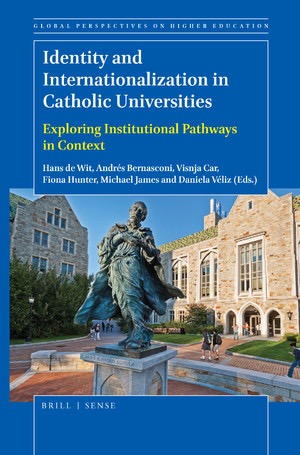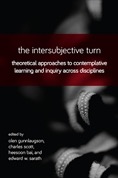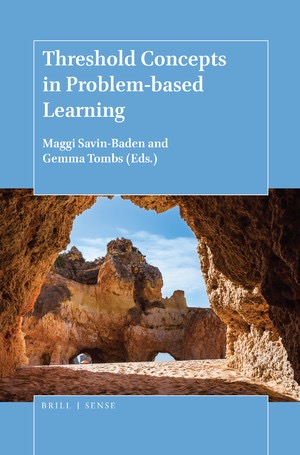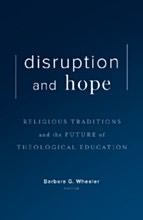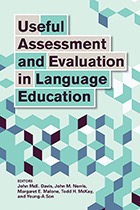student learning
Select an item by clicking its checkbox
Date Reviewed: April 15, 2020
Based primarily on case studies, Identity and Internationalization in Catholic Universities brings readers a global perspective on the ways in which Catholic universities are grappling with questions of identity and internationalization. Although many books are limited to a single country or region, this edited collection includes contributions from Latin America, the United States, Asia-Pacific, and Europe. The result is an informed and global account of institutional and socio-political experiences that are shaping and being responded to by Catholic universities today.
This book would be helpful for several audiences. Most obviously, this book would benefit administrators in Catholic higher education who regularly face questions not only of identity and internationalization, but also questions of academic rigor, institutional relevance, and others that the various contributions explore in different ways; this book will put these administrators’ institutional commitments into conversation with other similar institutions. Also, because identity and internationalization are not unique to Catholicism, many universities of secular or other religious heritage would find these contributions insightful for their own institutional contexts. Additionally, Catholic centers that seek to advance issues related to multiculturalism, globalization, international collaboration, issues of common concern (such as climate change or peace studies), or Catholic identity would likewise benefit from learning the ways that these are being discussed among other Catholic institutions in a variety of cultural contexts. Finally, this book would help instructors of practical theology or religion and society courses to have a more global perspective on the ways identity and internationalization affect Catholic organizations. Equipped with this book, faculty could better explain the ways a shifting Catholic identity and a changing society affect Catholic schools, hospitals, nonprofits, and others.
Perhaps a more universal and unique contribution of this book is the frame that the introductory chapter provides for the forthcoming chapters. In walking readers though the impact of identity and internationalization within Catholic universities and providing insights for crafting a strategic plan to more intentionally address these, all of the above audiences are provided with practical ways to navigate the challenges they are facing. Likewise, the chapters that follow each illuminate the ways mission and vision are enabled or constrained by identity, internationalization, and the strategic plan of the university.
The editors could have expanded the reach of their book by providing more theory and analysis, the dearth of which is demonstrated in the lack of scholarly resources in many of the chapters. A more extensive theoretical base would have embedded the valuable empirical findings in a stronger theoretical frame, making the insights more portable to readers.
Still, my desire for a stronger theoretical underpinning to this collection does not take away from the fact that this book makes a valuable contribution to the conversations surrounding identity and internationalization in higher education. Identity and Internationalization in Catholic Universities is indispensable not only for those in leadership in Catholic higher education, but also for those leading Catholic schools, hospitals, nonprofits, networks, Bishops conferences, and other organizations that seek to make a distinctly Catholic impact in an increasingly global and pluralist world.
Date Reviewed: April 15, 2020
Contemplative pedagogy has become quite popular over the past decade (Jacoby, 2019). This book builds on previous contemplative pedagogical scholarship (Barbezat and Bush, Contemplative Practices in Higher Education, Jossey-Bass, 2014; Simmer-Brown & Grace, Meditation and the Classroom, SUNY Press, 2011), especially a prior volume by the same editors—Contemplative Learning and Inquiry across Disciplines (Gunnlaugson et al., 2014). This book focuses on second-person perspectives or intersubjectivity, which the editors note can be represented spatially as between people, rather than subjectively inside or objectively outside them. It seeks to redress the tendency in contemplative studies to focus on first-person, personal experiences or third-person, objective study and observation of individuals engaged in contemplation.
The Intersubjective Turn would interest contemplative studies scholars as well as instructors with a previous background in contemplative pedagogy. Those unfamiliar with contemplative approaches to higher education would benefit from first consulting the work of Barbezat and Bush (Contemplative Practices in Higher Education, Jossey-Bass, 2014) or the previous volume (Gunnlaugson et al., Contemplative Learning and Inquiry across Disciplines, 2014), especially Arthur Zajonc’s overview of contemplative pedagogy in higher education and Harold Roth’s proposed pedagogy for contemplative studies. Although instructors who teach in public universities and colleges may find it challenging to adapt some of the contemplative approaches to their institutional context, those at private institutions and seminaries may encounter less difficulty in applying the contemplative pedagogies discussed.
Each article emphasizes the value of incorporating intersubjectivity into one’s contemplative pedagogy and focuses on particular classroom activities that promote such intersubjectivity. Mirabai Bush discusses her “Just Like Me” exercise developed for Google’s Search Inside Yourself program, where participants first engage in self-compassion and then become aware of what they share with others, and her “Mindful Emailing” activity where participants write a response to an email, but before sending it, lean back, take three deep breaths, re-read their response and imagine how it might be received by the other person. David Lee Keiser describes a pedagogical practice that addresses students’ discomfort at being stared at: a “stage exercise” where students mindfully walk to the front of the auditorium, pause and take a breath, make eye contact at least once with everyone in the room, then mindfully walk off stage, taking another breath and then returning to their seat.
Lyn Hartley advocates deep dialogue in which students explore uncertainties and questions that no one has answers to, which allows for transformative learning. Judith Simmer-Brown draws on Gregory Kramer’s method of “insight dialogue” to have students sit in dyads, reflecting on challenging aspects of their spiritual or personal journeys as they speak for three minutes and then return to silence and deep listening.
David Forbes uses mindfulness as a way for students to reflect on unexamined assumptions and conditioned patterns of thought in order to move towards a postconventional, self-authorized consciousness that tolerates ambiguity and agile thinking. Joanne Gozawa emphasizes the value of students not only doing contemplative practices, but “not doing” them by listening to silence and embodying a posture of receptivity. Other chapters discuss theological and theoretical reasons for engaging in intersubjective contemplative practices, advocating contemplative inquiry as a means of promoting empathetic connection.
Date Reviewed: April 15, 2020
The editors of this volume address a gap in scholarship by bringing Problem-based Learning (PBL) into fruitful dialogue with the separately developed Threshold Concepts Framework (TCF). The goal of the volume is to show how TCF enhances the understanding and practice of PBL. None of the authors addresses the teaching of theology or religion; nonetheless, each chapter offers some insight that could readily lend itself to a better understanding of the process of learning in the theology or religious studies classroom. The collection begins with four strong introductory chapters addressing the basics of these two pedagogical approaches and their relationship to each other. The next three chapters lay out how these theories can be found across such different disciplines as engineering education, chemical engineering design, and professional development for university teachers. The final three chapters report on research projects that point out new TCs in additional disciplines.
PBL is an educational practice that presents students with real world problems that are not neatly defined and do not have an obvious solution. Students work in groups to decide what further knowledge they need, how to obtain it, and how to represent it. The TCF works with the points at which students cross in a significant way from familiar ways of framing knowledge to a point of disorientation and then to incorporating new knowledge. Savin-Baden and Tombs describe TCs and PBL as independently developed pedagogies but natural partners nonetheless. This is true in two ways. PBL has long described itself as deliberately constructing a path for students toward and through “troublesome” knowledge. Suitable problems for PBL are those that lead students to a point of being stymied in their existing level of knowledge as they address wicked problems that are not easily classified and solved. Often the PBL method is itself troublesome to students as they wrestle with an educational process that shifts responsibility from teacher to student and from individual to group.
Operating separately, TCs identify and work with concepts either particular to a discipline or more generally, that require a student to leave the space of prior knowledge and self-understanding and enter into a liminal state in which prior knowledge is no longer viable but new concepts or self-understandings are not yet grasped or stabilized. TCs give attention to the type and amount of scaffolding that is necessary to prepare students and help to direct them through these impasses. Although the TCF was originally developed through consideration of threshold concepts in particular disciplines, the editors go beyond those boundaries to consider transdisciplinary concepts including critical thinking.
Even though the chapters devoted to particular disciplines are not all obviously applicable to teaching theology and religion, their authors succeed in making the target ideas more understandable. The chapter most valuable for teachers of theology and religion is the contribution of Jayne Lewis, “Empathy and Problem-based Learning.”
People unfamiliar with these two areas will find enough guidance to read the discussion fruitfully; that being said, this collection is not an entry-level introduction but an opportunity for deeper development for those already familiar with one or both of these approaches. There are more proofreading issues in this book than one would expect. Skipped words and puzzling phrases slow readers down while they grapple with making sense of the text.
Date Reviewed: April 15, 2020
Demographic and societal shifts in religion—to say nothing of higher education challenges—gnaw at North American theological education. The turbulence around the religious and educational environment is constant, and the essays in this volume acknowledge these challenges while exploring methods to move forward. The essays were written by seminary presidents and university leaders of various traditions to honor Daniel Aleshire, longtime executive director of the Association of Theological Schools (ATS). The first four essays address the challenges faced by theological schools while the final two essays examine the rise of non-Christian traditions in North America. Outside of the six essays, a helpful introduction provides coherence to the book, while the honoree of the volume supplies an afterword.
The first two essays by David Tiede and Martha Horne soberly name the disruptions around theological education. Tiede raises four pressing challenges and how Lutherans (ELCA) are addressing them: the digitization and marketing of everything; the cost/debt spiral; the need for leadership change; and the focus on educational results. Horne provides a call for change through the story of Desmond Tutu’s awakening to how theology is shaped by different historical, sociological, and cultural contexts. This should drive an ability for Anglican comprehensiveness, anchored in communion, worship, and mission, that allows for theological inquiry and debate.
Donald Senior focuses on the type of Roman Catholic seminary candidate needed for the emerging needs of this world. Priestly formation from the work of Pope John Paul II roots this vision and is then joined with values from Pope Francis’s vision of the joy of the gospel, care for creation, and mercy. While other essays focus on curriculum or mission, Senior calls for a counter-cultural vision for theological education embodied through its people.
Evangelical pragmatism and its aversion to seminary training is the focus of Richard Mouw’s essay. Mouw encourages theological schools to listen to concerns and questions of those in ministry. Theological educators must make the case for theological education, but must do so with an empathetic spirit throughout the conversation.
The final two essays by Douglas McConnell and Judith Berling examine multifaith engagement and its implications for pedagogical concerns. McConnell grapples with how to engage a multifaith context from an evangelical framework. He calls for convicted civility rooted in hospitality and illustrates this through an institutional case study. Berling traces the history of multifaith theological education in mainline seminaries and explores ongoing opportunities and challenges. She raises the many ways that tradition can be both understood and shaped; this flexibility in tradition should aid in classroom pedagogy and interreligious learning.
The volume as a whole encourages faculty, administators, stakeholders, and institutions to discern their core identity and mission. This, in turn, should drive what doctrines/affirmations and practices of life are central to a school’s tradition. While not prescriptive in methodology, the essays provide a quick read for busy stakeholders that can foster reflective dialogue on mission, tradition, and vision.
Date Reviewed: April 15, 2020
This book is a collection of fourteen essays representing presentations made at the 2016 Georgetown University Round Table (GURT) conference, sponsored by the Georgetown University Department of Linguistics and the Assessment and Evaluation Language Resource Center (AELRC). These essays showcase a diverse set of ap-proaches to treating assessment and evaluation as “tools of educational transformation” for foreign-language learning (vii). They focus on primary, secondary, and undergraduate-level foreign language instruction, with none concentrating specifically on graduate-level theological education or religious studies. Nonetheless, the volume offers some novel proposals for structuring language courses that may benefit biblical or modern language sequences offered in theological schools and religious studies pro-grams. The book is organized into three sections, each representing emerging research and praxis on transformative foreign language assessment and evaluation for e-learning platforms, language course instruction, program development, and ESL student placement.
Part one—Connecting Assessment, Learners, and Learning—surveys theories and practical implementations of assessment and evaluation for enhancing language learning, particularly from the perspective of student and teacher self-assessment processes. In five essays, this section establishes self-assessment as a continual process and offers practical steps for integrating self-assessment in foreign language acquisition.
Part two—Innovating, Framing, and Exploring Assessment in Language Education—covers topics such as the formative use of task-based assessment “in primary schools, the implementation of technology-mediated speaking performance assessment, and validation of educational placement decisions for immigrant learners” (ix). Some of the proposals may provide seminaries and graduate-level liberal arts programs fresh avenues for (1) going about its sequence of biblical language instruction or (2) resourcing multilingual students navigating North American theological and religious education.
Part three—Validity Evaluation—includes five essays that address processes for assessment validation, such as corroborating the outcomes of university entrance exams or language placement exams with student achievement and retention. These essays provide suggestions for the evaluation of overall language programs implemented by institutions. As a whole, it may supply new considerations about evaluating outcomes of language instruction for theological ESL programs.
The perspectives offered in this volume present innovative research on foreign language learning from outside the academic contexts of theological education and religious studies. As a result, they reflect fresh theoretical and practical considerations that may not have, as of yet, permeated conventional resources and “common knowledge” about assessment and evaluation in theological education. While it may prove to be a beneficial read, those primarily located in theological education and religious studies who grapple with issues of language instruction—especially biblical language instruction or the implementation of theological ESL programs—may still find this a challenging read. While the scholarship is relevant at times, its application is left to the reader from theological education and religious studies to make. Despite this potential difficulty, the volume represents the kinds of knowledge and resources available to theological education and religious studies from other educational stages and learning environments that may be further along in considerations about institutional learning processes, e-learning pedagogy, foreign language classroom instruction, and support of multilingual, international students.
